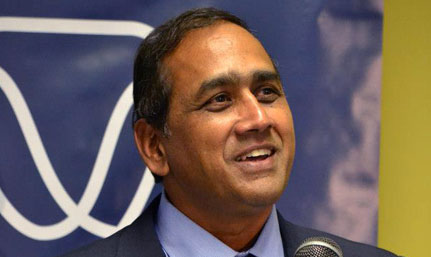|
 |
|
Prof Prakash Naidoo
Photo:Thabo Kessah
17 April 2013 |
The Qwaqwa Campus welcomed its new Head in the person of Prof Prakash Naidoo. Prof Naidoo, former Deputy Vice-Chancellor: Finance (Resources and Planning) at the Vaal University of Technology (VUT), received a very warm welcome from the staff, students and the Eastern Free State community.
In response to his welcoming, Prof Naidoo thanked among others, his predecessor, Dr Elias Malete, for his leadership of the campus, as well as the Head: Operations, Teboho Manchu and the Head: Academic, Dr Elsa Crause, for their support during his first few days on campus.
“I am elated to be joining an institution that is serious about transformation. There is still a lot of work ahead to make this campus the best,” said Prof Naidoo.
“Positive vibrancy exists here and all of us must begin to think about how we can multiply the effect to make it even better.”
“This year the campus is celebrating its tenth year in existence as part of the University of the Free State and we have accomplished much in this time. However, there is still a lot to accomplish in the next 10 years. We need progressive change. Let us all look ahead, but let us never forget the past.”
“Today’s students live with greater complexities, like watching too much TV and reading less. They need more counselling and guidance. In my book, students come first. Academic business comes first.”
Prof Naidoo expressed his optimism in working with all internal and external stakeholders.
“I am a team player and we must all develop a working plan for this campus,” Prof Naidoo said.
The welcoming was attended by members of the Council and the Rectorate.